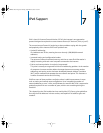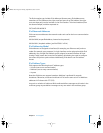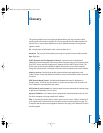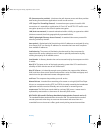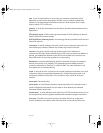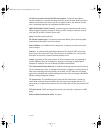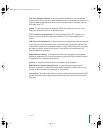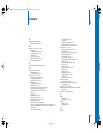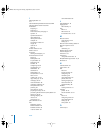
90 Glossary
multicast An efficient, one-to-many form of streaming. Users can join or leave a
multicast but cannot otherwise interact with it.
multihoming The ability to support multiple network connections. When more than
one connection is available, Mac OS X selects the best connection according to the
order specified in Network preferences.
MX record (mail exchange record) An entry in a DNS table that specifies which
computer manages mail for an Internet domain. When a mail server has mail to deliver
to an Internet domain, the mail server requests the MX record for the domain. The
server sends the mail to the computer specified in the MX record.
name server See DNS (Domain Name System).
NAT (Network Address Translation) A method of connecting multiple computers
to the Internet (or any other IP network) using one IP address. NAT converts the IP
addresses you assign to computers on your private, internal network into one
legitimate IP address for Internet communications.
network interface Your computer’s hardware connection to some network. This
includes (but is not limited to) Ethernet connections, Airport cards, and FireWire
connections.
node A processing location. A node can be a computer or some other device, such as
a printer. Each node has a unique network address.
NTP (network time protocol) A network protocol used to synchronize the clocks of
computers across a network to some time reference clock. NTP is used to ensure that
all the computers on a network are reporting the same time.
Open Directory The Apple directory services architecture, which can access
authoritative information about users and network resources from directory domains
that use LDAP, NetInfo, or Active Directory protocols; BSD configuration files; and
network services.
open relay A server that receives and automatically forwards mail to another server.
Junk mail senders exploit open relay servers to avoid having their own mail servers
blacklisted as sources of spam.
packet A unit of data information consisting of header, information, error detection,
and trailer records. QTSS uses TCP, UDP, and IP packets to communicate with streaming
clients.
LL2351.Book Page 90 Monday, September 8, 2003 2:47 PM




